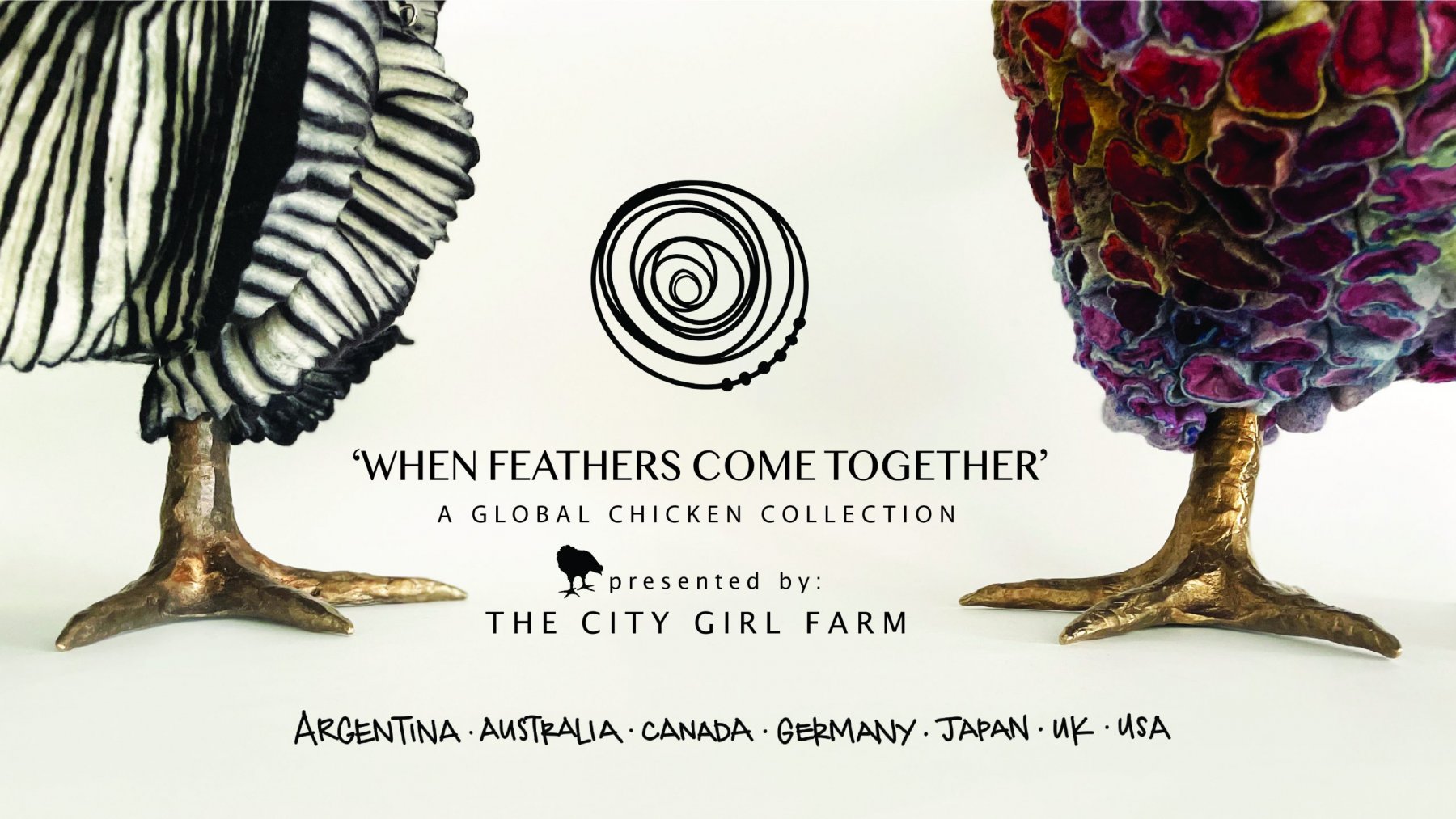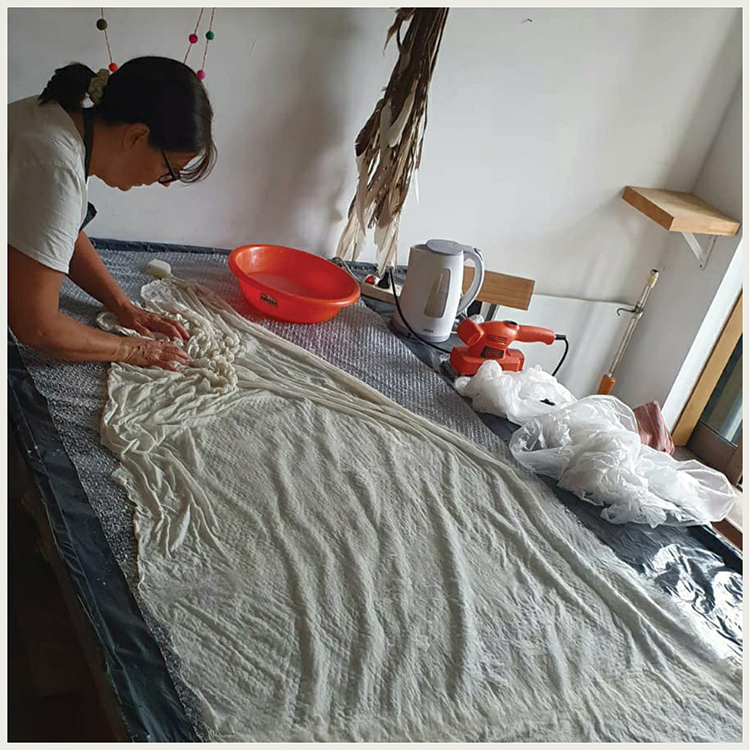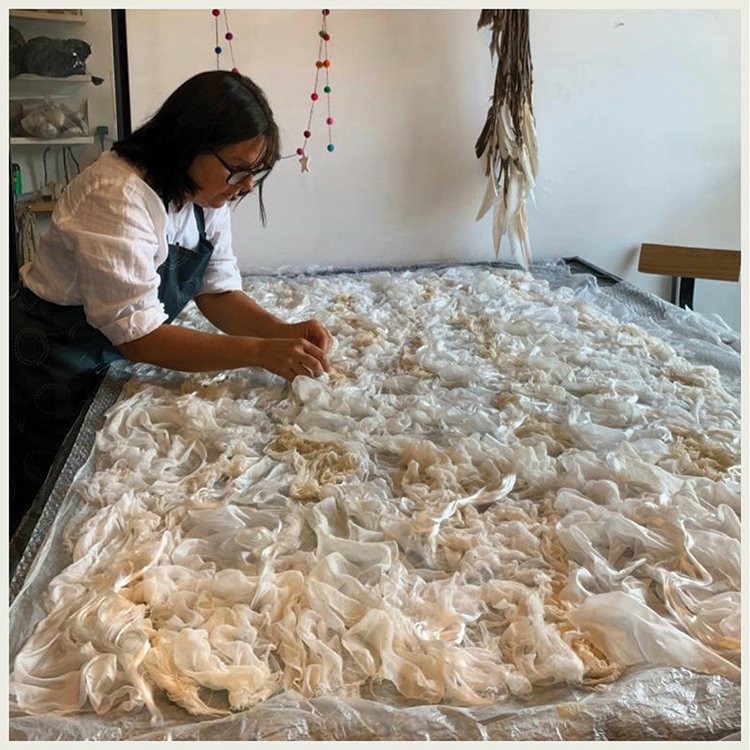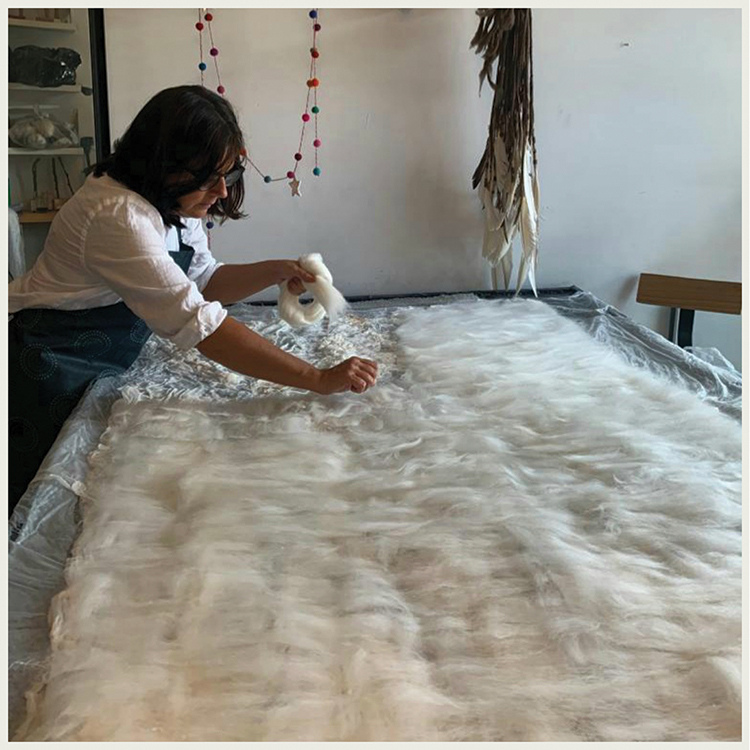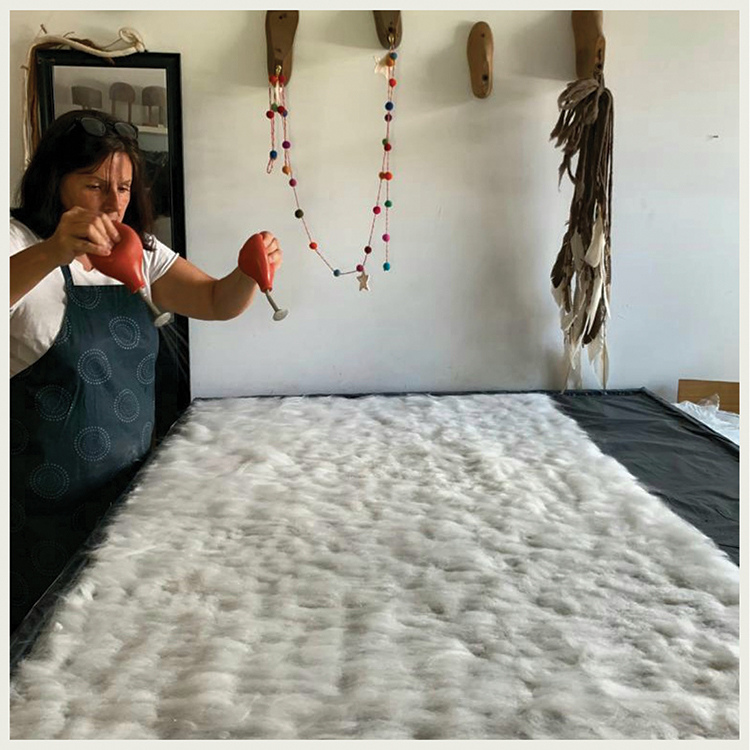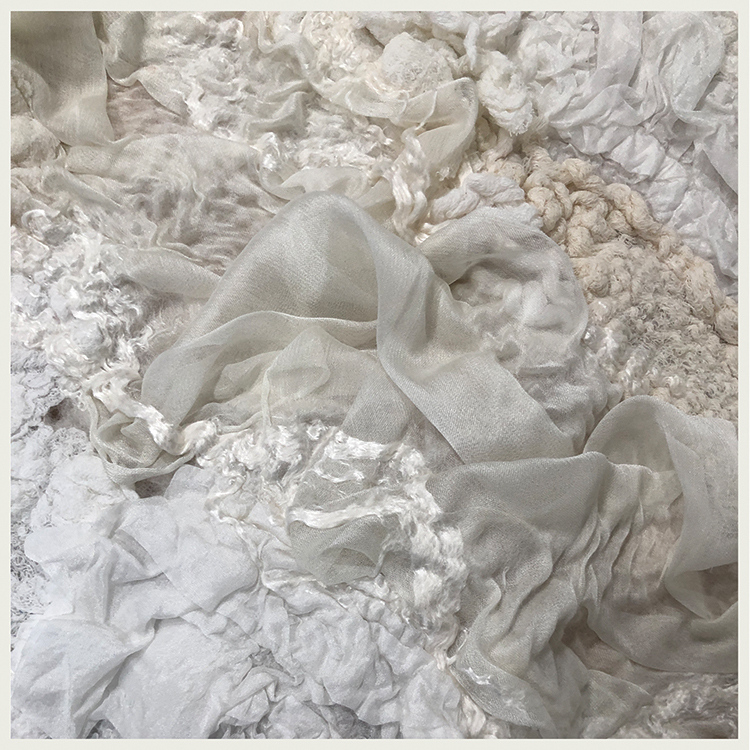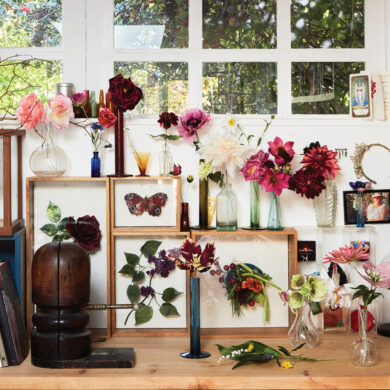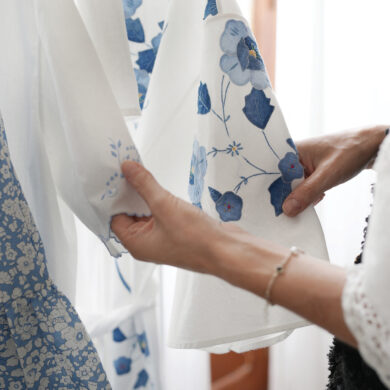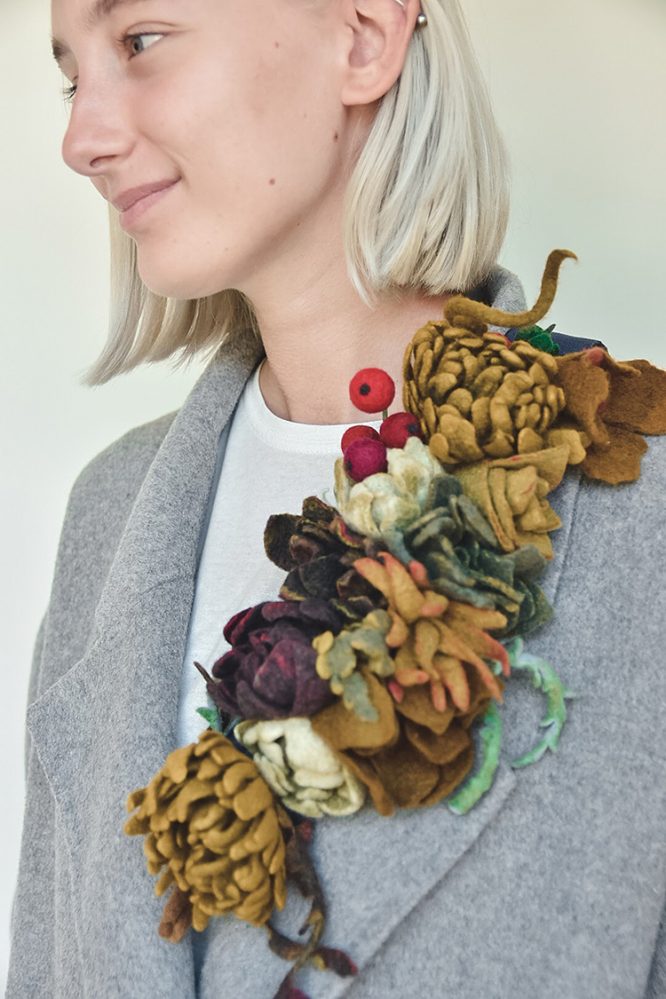
Our main inspiration for most of our new projects is nature! We explored many activities related to art, and we discovered felt in a very special way. Belén was interested in felt and bought a book about it to learn this new type of work. Not knowing about Belén’s newfound interest, I (Maru) signed up for a class to learn about felt at the same time she bought the book — we were both attracted to the same thing without knowing it! We took that as a sign which led us to work together and create the Amalanafelt workshop in 2009.
Starting out, we mainly relied on trial and error, but after much research and enthusiasm, we managed to put together a basic course. … Then, we were lucky enough to be recognized by “felters” from the other side of the world who began to arrive in Argentina!
One of the most challenging obstacles we had to face during this project was that, even though Argentina does produce high-quality merino wool with very fine microns (the type of wool required to make “felt”), it is extremely difficult to obtain, since all of it is exported outside of the country.
One of the techniques that we are most passionate about is Nuno felt. In our early days, they taught us that it was only made with natural silk, and this meant other obstacles that we would have to overcome. Argentina does not produce silk. … That is what motivated us to start experimenting with other qualities and types of fabrics!
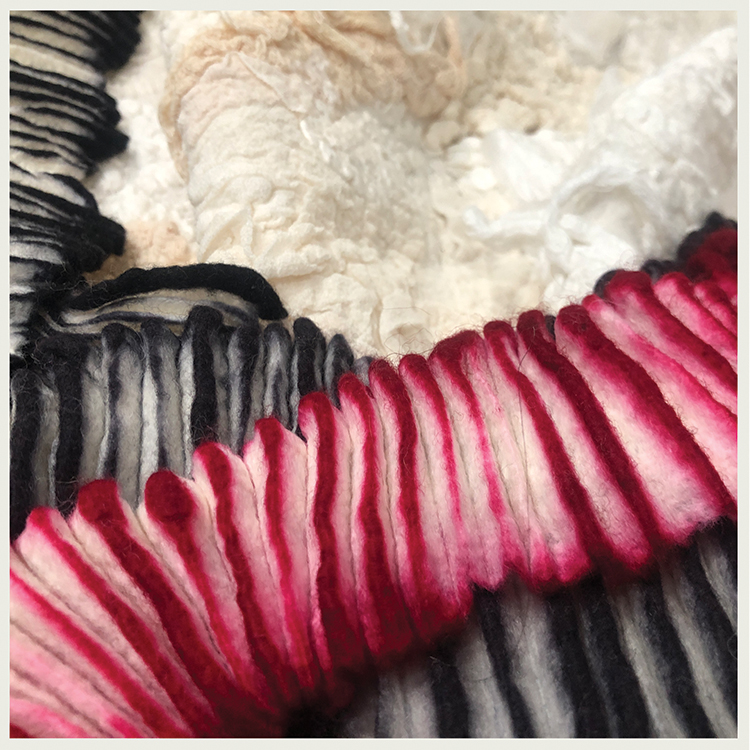
IMPORTANT: PROCESS FOR CREATING
We were going to use a special process for the exhibition of these wonderful hens. We finally decided on the Nuno and pleated felt. The “marriage” of wool and silk is perfect! By gathering the silk, irregular and undulating textures are achieved that stand out on the surface of the felt, giving it a dynamic movement. In contrast, we use pleated felt by tying the felt cloth onto a rigid surface that we then press with great force to produce straight folds and firm edges. The colors are achieved by dyeing the piece with the ties; in this case, we use the natural color of merino wool and black. Wavy lines versus straight lines, these two techniques form another lovely marriage!
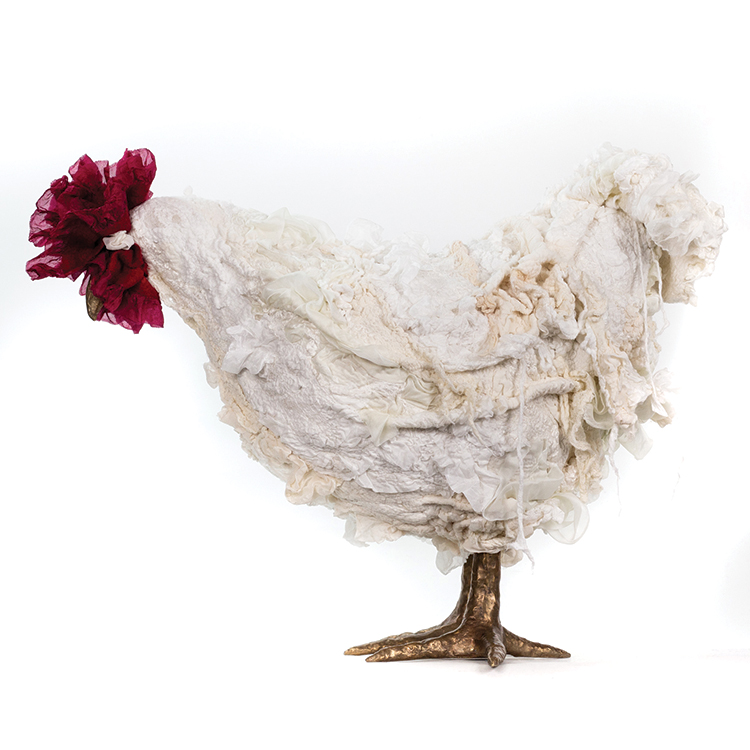
LU
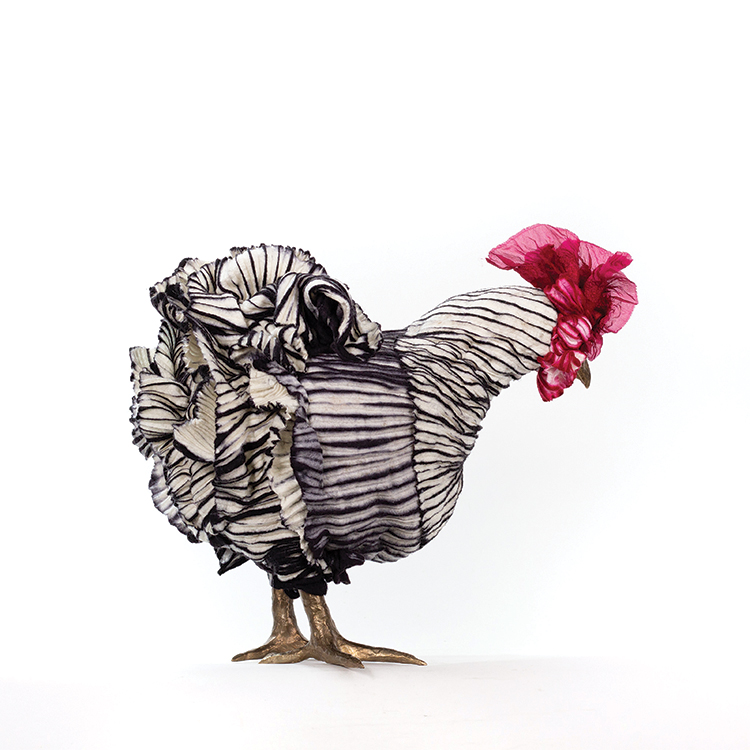
LITTLE PETER

Our main inspiration for most of our new projects is nature! We explored many activities related to art, and we discovered felt in a very special way. Belén was interested in felt and bought a book about it to learn this new type of work. Not knowing about Belén’s newfound interest, I (Maru) signed up for a class to learn about felt at the same time she bought the book — we were both attracted to the same thing without knowing it! We took that as a sign which led us to work together and create the Amalanafelt workshop in 2009.
Starting out, we mainly relied on trial and error, but after much research and enthusiasm, we managed to put together a basic course. … Then, we were lucky enough to be recognized by “felters” from the other side of the world who began to arrive in Argentina!
One of the most challenging obstacles we had to face during this project was that, even though Argentina does produce high-quality merino wool with very fine microns (the type of wool required to make “felt”), it is extremely difficult to obtain, since all of it is exported outside of the country.
One of the techniques that we are most passionate about is Nuno felt. In our early days, they taught us that it was only made with natural silk, and this meant other obstacles that we would have to overcome. Argentina does not produce silk. … That is what motivated us to start experimenting with other qualities and types of fabrics!

IMPORTANT: PROCESS FOR CREATING
We were going to use a special process for the exhibition of these wonderful hens. We finally decided on the Nuno and pleated felt. The “marriage” of wool and silk is perfect! By gathering the silk, irregular and undulating textures are achieved that stand out on the surface of the felt, giving it a dynamic movement. In contrast, we use pleated felt by tying the felt cloth onto a rigid surface that we then press with great force to produce straight folds and firm edges. The colors are achieved by dyeing the piece with the ties; in this case, we use the natural color of merino wool and black. Wavy lines versus straight lines, these two techniques form another lovely marriage!

LU

LITTLE PETER





